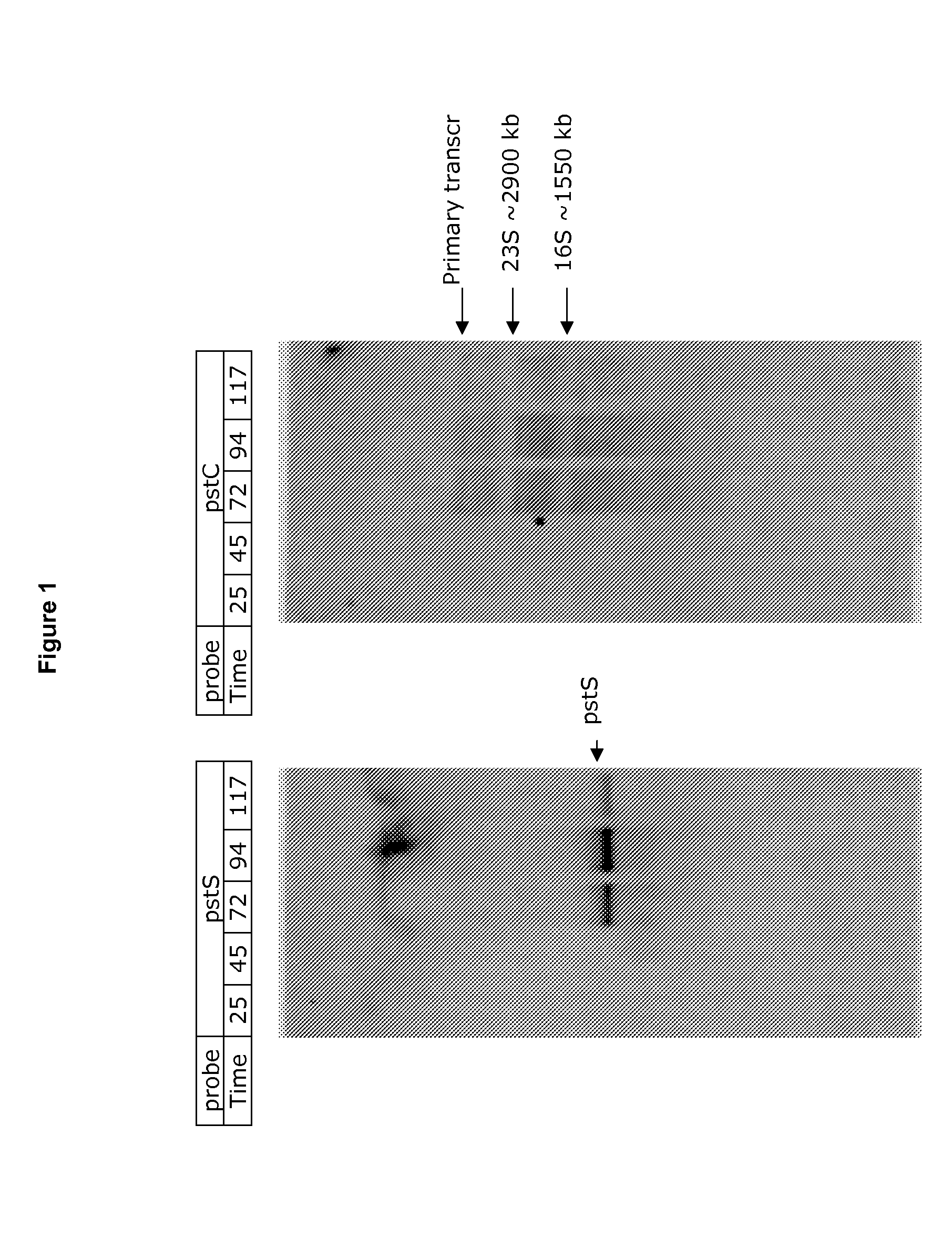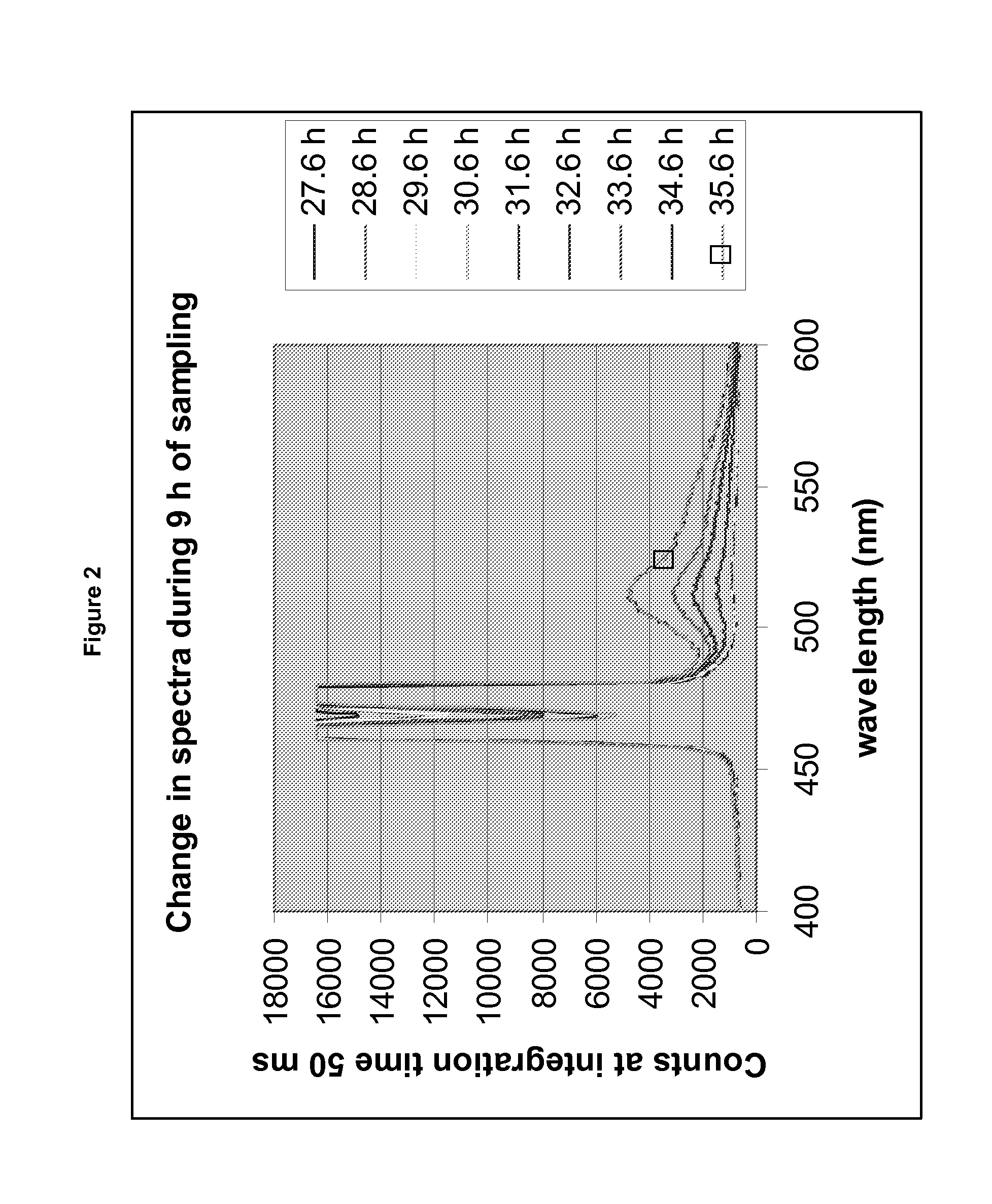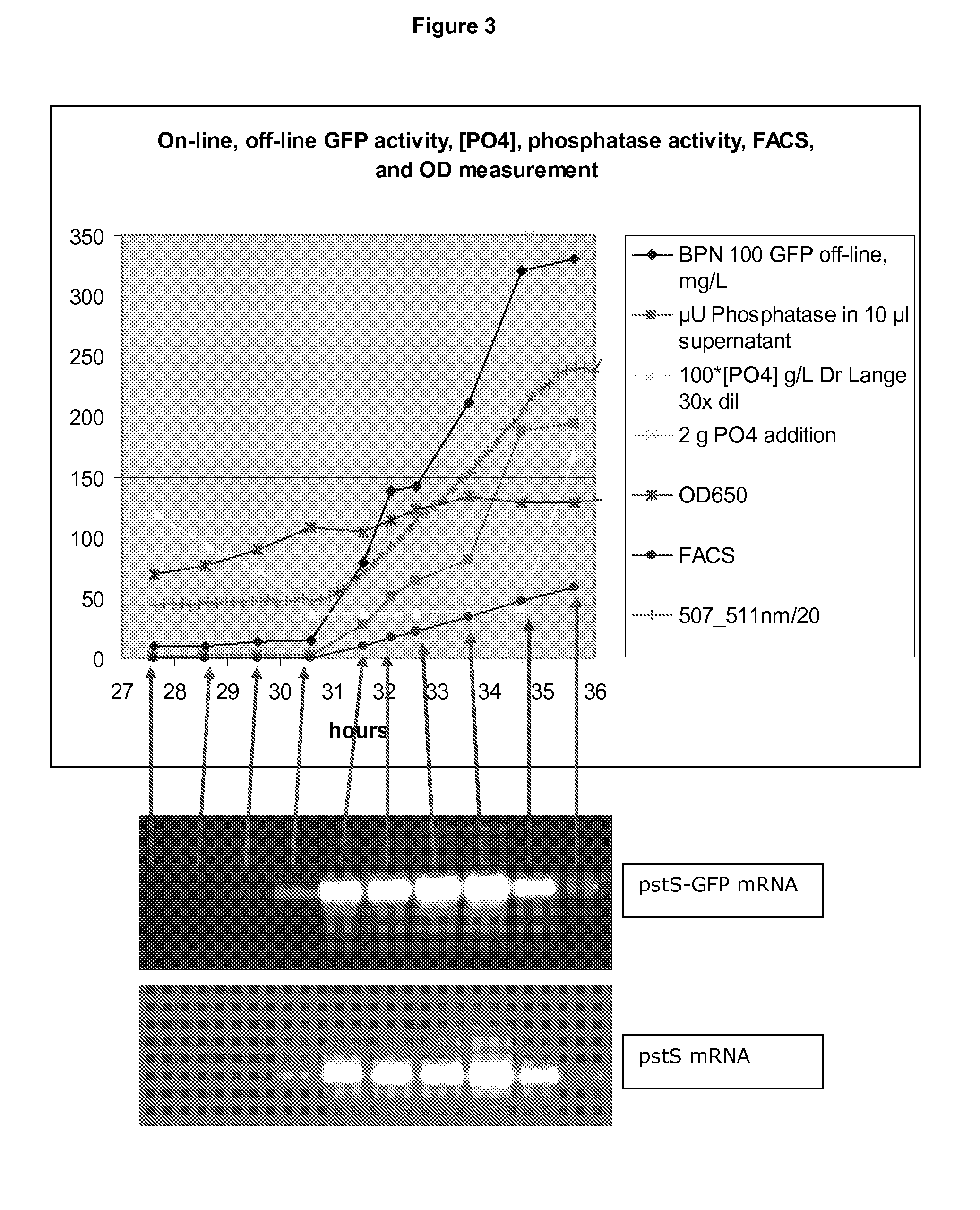DNase Expression in Recombinant Host Cells
- Summary
- Abstract
- Description
- Claims
- Application Information
AI Technical Summary
Benefits of technology
Problems solved by technology
Method used
Image
Examples
example 1
Phosphate Starvation Response in B. licheniformis
[0135]Phosphate starvation in late stage fermentation samples was detected already in our first microarray experiments, using partial B. licheniformis microarray slides containing about 200 interesting genes. Cells are not “truly” limited for phosphate, since huge amounts of phosphate is normally incorporated into teichoic acids in the cell wall. When the cells sense a low concentration of phosphate in the medium, one of the responses is to substitute these teichoic acids with non-phosphate containing teichuronic acids and thereby liberate phosphate.
[0136]Making a biosensor for phosphate limitation could therefore be questioned, if only one biosensor was planned to be made. However, in combination with biosensors for different trace metals, the phosphate starvation biosensor is essential, as discussed above. A number of other facts also made the phosphate biosensor a very attractive choice to start with:
[0137]1) the pst-operon (invol...
example 2
Strain Construction in Bacillus for Detecting Phosphate Starvation
[0140]When the phosphate level is low the transcription of certain genes responds strongly. A set of such genes are found in the pst operon of Bacillus. In our experiment a gene encoding a variant of the green fluorescent protein, denoted BioST (variant: F64L, S65T), from the jellyfish Aequorea victoria, has been fused transcriptionally to the pst transcript [New Unstable Variants of Green Fluorescent Protein for studies of Transient gene expression in bacteria. App. Env. Mic. 1998 p2240-2246, incorporated herein by reference].
[0141]Constructs were made, wherein the bioST gene was inserted 1) immediately downstream of the pst promoter region and upstream of the pst operon “Ppst bioST”, or 2) downstream of the last gene in the operon (pstBB) in the transcript “pstBB bioST”.
[0142]The Ppst bioST fusion was inserted into the chromosome of B. subtilis in the amyE locus (PP2203-1), and in B. licheniformis the fusion gene wa...
example 3
On-Line Measurement of Phosphate Starvation
Equipment
[0150]1) A spectrometer, which detects all emission wavelengths between 329-1100 nm (AVANTES™ AVASPEC™-2048FT-SPU), coupled via an via an optic cable (AVANTES™ FC-UV600-2) to a collimating lens situated in a light protected box (see below). BioST emission maximum is at about 508 nm[0151]2) A light source, which gives a strong excitation light at about 470 nm and no light at all at wavelengths above 500 nm, since reflection of the excitation light into the spectrometer will disturb detection of the emission light of the GFP protein (BioST excitation maximum is at about 470 nm). We tested the AVANTES™ AVALIGHT™-LED-470 nm, with an optical bandpass filter (470+1-10 nm from KNIGHT OPTICAL™ (UK) Ltd), but found the light intensity too low. Instead we used a home-made light source, which consists of a 5 mm high brightness blue LED (2000 mcd, peak wavelength of 470 nm), combined with the abovementioned optical filter. The LED was placed i...
PUM
| Property | Measurement | Unit |
|---|---|---|
| Fraction | aaaaa | aaaaa |
| Time | aaaaa | aaaaa |
Abstract
Description
Claims
Application Information
 Login to View More
Login to View More - R&D
- Intellectual Property
- Life Sciences
- Materials
- Tech Scout
- Unparalleled Data Quality
- Higher Quality Content
- 60% Fewer Hallucinations
Browse by: Latest US Patents, China's latest patents, Technical Efficacy Thesaurus, Application Domain, Technology Topic, Popular Technical Reports.
© 2025 PatSnap. All rights reserved.Legal|Privacy policy|Modern Slavery Act Transparency Statement|Sitemap|About US| Contact US: help@patsnap.com



